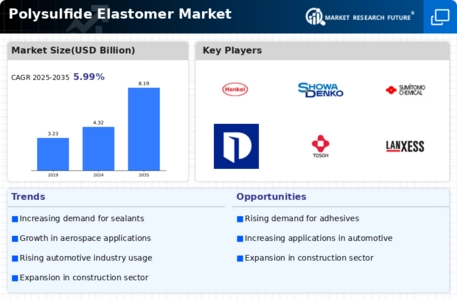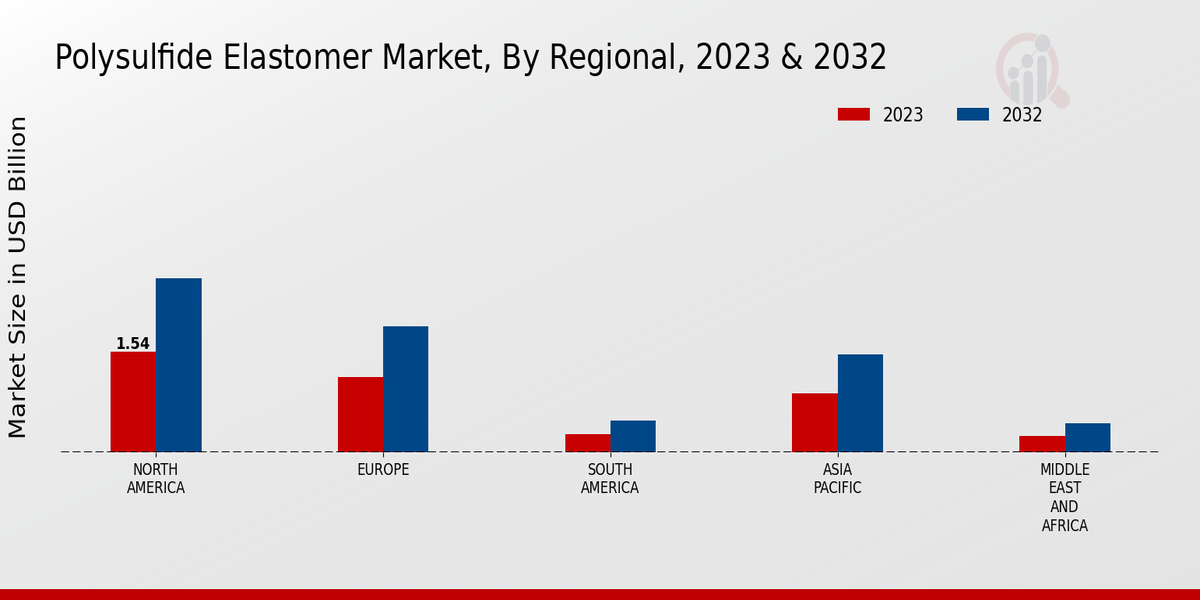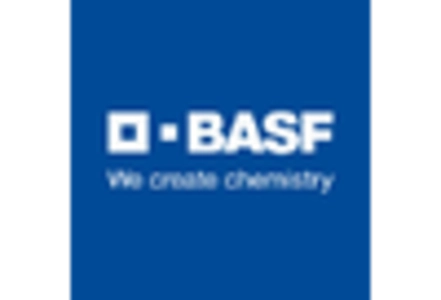Rising Demand from Automotive Sector
The automotive industry plays a pivotal role in driving the Global Polysulfide Elastomer Market Industry. As manufacturers increasingly seek lightweight and durable materials for vehicle components, polysulfide elastomers provide an attractive solution due to their excellent mechanical properties and resistance to harsh environments. In 2024, the market is projected to reach 4.32 USD Billion, reflecting the growing adoption of these materials in automotive applications. Furthermore, the shift towards electric vehicles, which require advanced sealing and insulation materials, is expected to further bolster demand. This trend indicates a robust growth trajectory for the polysulfide elastomer market in the automotive sector.
Expansion in Construction Applications
The construction industry is witnessing a surge in the utilization of polysulfide elastomers, primarily due to their superior sealing and bonding capabilities. These materials are increasingly employed in applications such as waterproofing, expansion joints, and sealants, which are critical for ensuring structural integrity and longevity. As urbanization continues to escalate globally, the demand for high-performance construction materials is likely to rise. The Global Polysulfide Elastomer Market Industry is expected to benefit significantly from this trend, as construction projects increasingly prioritize durability and performance. This shift may contribute to the market's projected growth, with an anticipated CAGR of 5.99% from 2025 to 2035.
Technological Advancements in Material Science
Innovations in material science are propelling the development of advanced polysulfide elastomers, enhancing their performance characteristics and expanding their applications. Recent advancements have led to the formulation of polysulfide elastomers with improved thermal stability, chemical resistance, and mechanical properties. These enhancements are particularly beneficial in industries such as aerospace and oil and gas, where materials must withstand extreme conditions. The Global Polysulfide Elastomer Market Industry is likely to experience growth as these innovations enable manufacturers to meet stringent performance standards. As a result, the market is poised for expansion, with projections indicating a potential increase to 8.19 USD Billion by 2035.
Diverse Applications Across Multiple Industries
Polysulfide elastomers are increasingly recognized for their versatility, finding applications across various industries, including aerospace, electronics, and medical devices. Their unique properties, such as flexibility, durability, and resistance to chemicals, make them suitable for a wide range of uses. For instance, in the aerospace sector, polysulfide elastomers are utilized in fuel systems and sealing applications, while in electronics, they serve as insulating materials. This broad applicability is expected to drive growth in the Global Polysulfide Elastomer Market Industry, as companies across sectors seek high-performance materials. The ongoing diversification of applications suggests a promising outlook for market expansion.
Growing Awareness of Environmental Sustainability
There is an increasing emphasis on environmental sustainability within the Global Polysulfide Elastomer Market Industry. Manufacturers are now focusing on developing eco-friendly polysulfide elastomers that minimize environmental impact while maintaining performance. This shift is driven by regulatory pressures and consumer preferences for sustainable products. As industries seek to reduce their carbon footprint, the demand for environmentally friendly materials is likely to rise. This trend may lead to the introduction of bio-based polysulfide elastomers, further diversifying the market. Consequently, the Global Polysulfide Elastomer Market Industry could witness significant growth as sustainability becomes a central tenet of material selection.



















Leave a Comment